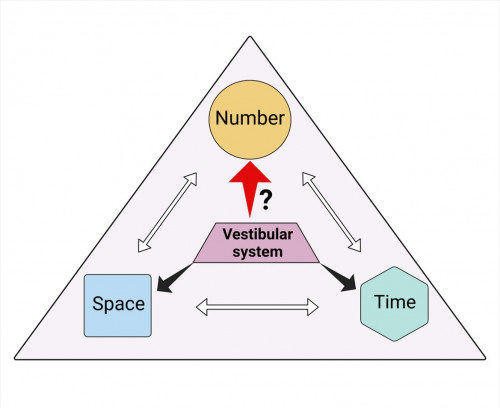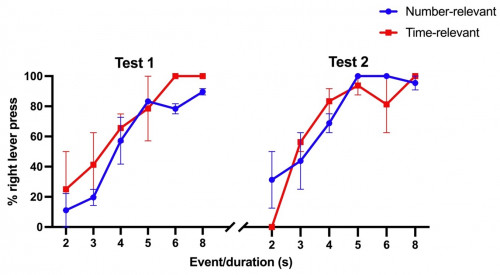Research
Published 9 August 2024Counting on Your Ears: Does the Vestibular System Deal in Numbers?

The ability to understand numbers is an important ability for everyday life, but its underlying neurobiology has gone largely unexplored
Instead, a 3-way interaction has been suggested between a person’s perception of space, time, and numbers – informing our understanding of where, when, and how many. The vestibular system, located in the inner ear which detects head movement in 3D, is important for both spatial and temporal information processing. Some patients with vestibular disorders have also demonstrated an inability to calculate (‘dyscalculia’) - a phenomenon unexplained for over 30 years, and one of the most common symptoms of people with vestibular disorders is difficulty in managing money. Therefore, it appears that the vestibular system plays an important role in numerical cognition (NC).
With their Marsden Fund Standard grant, the team (pictured) led by Associate Professor Yiwen Zheng (Ōtākou Whakaihu Waka University of Otago) is aiming to investigate whether and how changes in vestibular information will affect one’s ability to count.

The vestibular inner ear may contribute to numerical cognition either by direct involvement in processing numerical information or by providing dynamic updates on spatial and temporal information, which then influence numerical cognition through a space, time and number interaction.
They have adapted a numerical discrimination task developed by Professor Dalrymple-Alford (Te Whare Wānanga o Waitaha University of Canterbury), where they can use trained rats to discriminate auditory signals varying in either number or duration. The team found that when the signal varied by both number (count) and duration (time), the rats preferred detecting the difference in time. However, when the signal varied by number only, the rats could also discriminate the signals, suggesting they can count the numbers.
The rats were trained to discriminate auditory signals varying in either duration or numbers by pressing the right lever for either longer duration or larger number. Results are expressed as percentage right lever pressing. The red line represents the rats’ performance in response to auditory signals in different durations and as the duration becomes longer, the number of presses on the right lever is greater. The blue line represents the rats’ performance in response to auditory signals in different number and as the number becomes larger, the number of presses on the right lever is greater.
The team will next look for the underlying layer of the nervous system by recording neuronal activity in brain areas known to be important to numerical cognition while the rats are counting, with and without vestibular stimulation.
By understanding how the vestibular system is involved in numerical cognition and neural processes in rats, this study will explain a novel mechanism by which animals process numbers and dramatically change the way scientists understand numerical cognition. Importantly, it will also extend researchers’ understanding of numerical cognition into complex domains such as the interaction between space, time and numbers. Showing that the vestibular system may provide a common mechanism for spatial navigation, temporal orienting and numerical calculations will lead to important advances at the conceptual level and inform new ways of improving cognitive function in humans.
RESEARCHER
Associate Professor Yiwen Zheng
ORGANISATION
University of Otago
FUNDING SUPPORT
Marsden Fund
CONTRACT OR PROJECT ID
UOO2215
